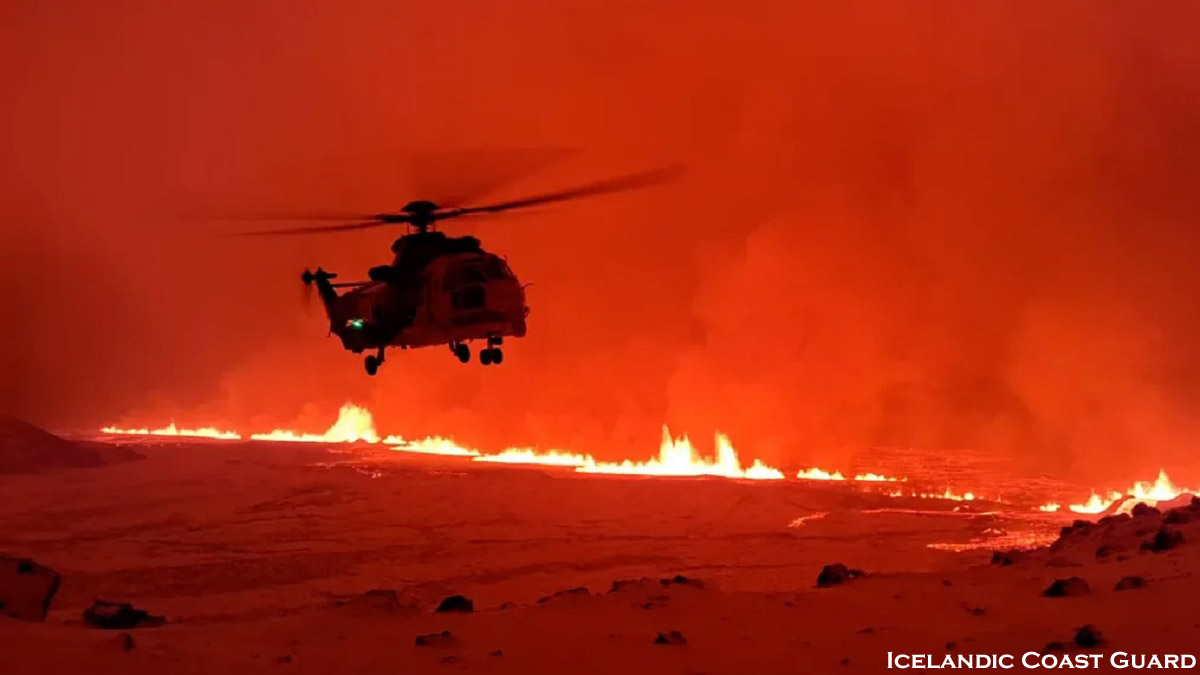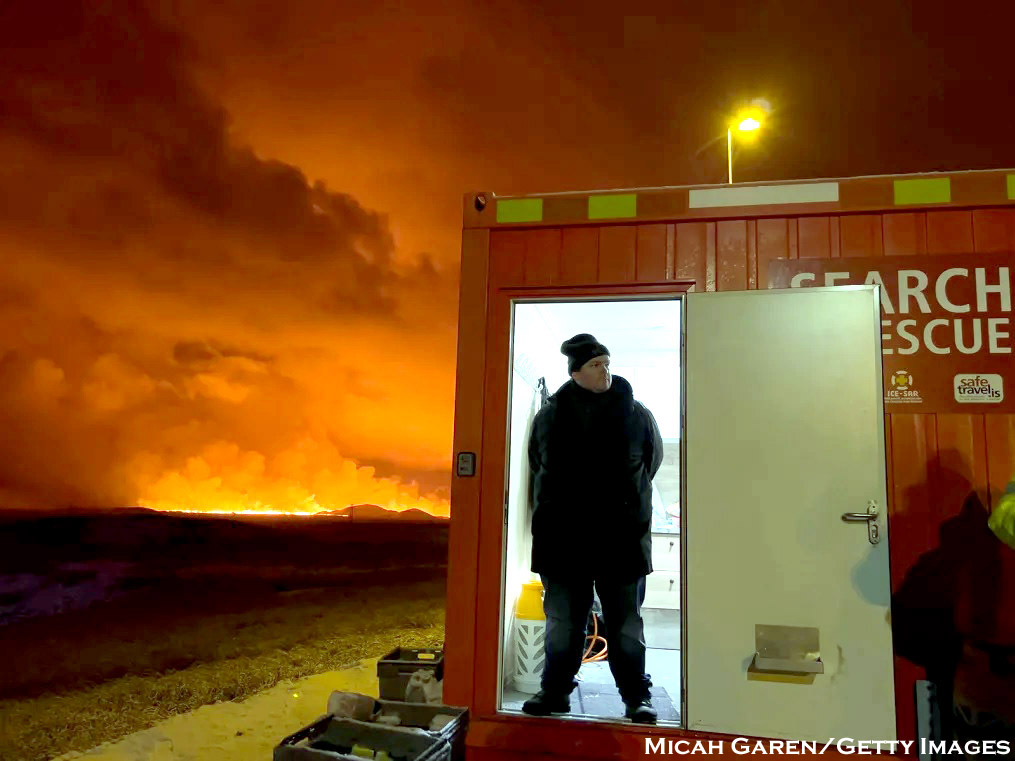In the wake of seismic unrest, a mesmerizing volcanic spectacle unfolded on Iceland‘s Reykjanes peninsula this Monday. Brilliant bursts of molten lava and billowing smoke painted the nocturnal canvas, marking the culmination of weeks of geological activity that necessitated the evacuation of a nearby township.

The eruption commenced at approximately 10 p.m. local time, spurred by an earthquake just an hour prior, as articulated by the Icelandic Meteorological Office. Positioned in proximity to Hagafell, about 3 kilometers (roughly 2 miles) north of Grindavík, the event cast a fiery glow upon the sky.
A video shared on Facebook by Iceland’s Coast Guard showcased a helicopter hovering above a lengthy expanse of radiant lava gushing from the earth’s fissure. The air, enveloped in smoke, took on vivid shades of orange and red.

As elucidated in a government statement on Tuesday, the newly formed fissure spans almost 4 kilometers. This incident marks the fourth eruption in the region since 2021, surpassing its predecessors in scale.
A month ago, the residents of Grindavík and adjacent settlements faced an evacuation mandate, compelling them to forsake their homes overnight due to the looming volcanic threat, as reported by RÚV, the public broadcaster. Presently, the town, once at risk from encroaching lava, stands devoid of inhabitants, a shift confirmed by the police. Grindavík, situated 7 kilometers from the renowned Blue Lagoon geothermal spa, attracts tourists with its scenic allure.
Reassuringly, Iceland’s government asserted that the eruption does not pose a direct threat to life. However, the affected area is off-limits to traffic, with a stern caution against approaching it.
Despite the unlikelihood of affecting populated zones or critical infrastructure in the upcoming days, the eruption does emit a substantial volume of noxious gases, cautioned the Icelandic Tourist Board on Tuesday. Visiting the eruption site is strongly discouraged while responders and scientists evaluate the evolving circumstances.
According to the government, flight operations to and from Iceland remain undisrupted, and international flight corridors remain open. The eruption, categorized as a fissure eruption, is not anticipated to yield significant ash production dispersed into the stratosphere or large-scale explosions.
In the initial two hours, the eruption released hundreds of cubic meters of lava per second, as reported by the Icelandic Meteorological Office. However, the intensity waned by early Tuesday, with lava extending laterally from the newly formed fissures.
The preceding month witnessed a barrage of earthquakes, prompting a national state of emergency when the Civil Protection Agency warned of a magma tunnel forming towards Grindavík.
The unprecedented nature of these events, hitherto unparalleled since the 1973 eruption in Vestmannaeyjar, prompted the agency’s acknowledgment. Vestmannaeyjar’s eruption, emerging without warning, obliterated 400 homes.
The iconic Blue Lagoon, renowned for its thermal waters, briefly closed last month due to initial signs of eruption. Despite reopening on Sunday, it declared another temporary closure in response to the ongoing eruption.
In a precautionary measure in November, authorities revealed plans for a protective trench around a geothermal power plant supplying electricity and geothermal water for a 30,000-strong population on the peninsula.
Iceland, situated on a tectonic plate boundary, continuously diverges, separating North America and Eurasia along the Mid-Atlantic Ridge. Hosting 32 active volcanoes, the island nation is familiar with volcanic activity, often unfolding in remote areas. Notably, the Bárðarbunga volcanic system erupted in 2014 without causing harm to communities.
In 2021, the Fagradalsfjall volcanic system erupted for the first time in over 6,000 years, drawing crowds rather than posing a threat to populated regions. Experts are optimistic that this eruption won’t replicate the chaos witnessed in 2010 when the Eyjafjallajökull volcano, involving glacial ice, led to widespread flight cancellations affecting millions.
